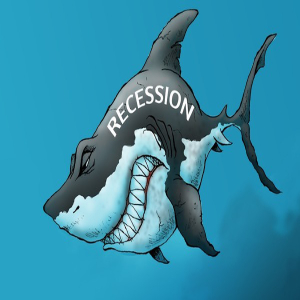Would losing $4 billion from U.S. delay California high-speed rail construction?
Published in News & Features
The California high-speed rail project expected to boost the Central Valley’s economy faced a major blow this week after President Donald Trump’s administration announced plans to pull back $4 billion of its federal money.
What would that mean for the high-speed rail construction already underway and planned between Bakersfield and Merced?
The $4 billion in jeopardy — a combination of one grant awarded to the project in 2010 and another awarded in 2023 — is earmarked for key high-speed rail initiatives in the Central Valley, including the construction of a downtown Fresno station. The project is set to lose that money from the federal government following a probe into the bullet train.
A 310-page federal report, released Wednesday, concludes the California High-Speed Rail Authority is incapable of completing the project in the Central Valley and that it has broken the terms of the two grants. The state rail authority has about a month to respond, after which the feds could move forward with permanently blocking the money.
“In 30 days, we fully expect them to make the decision to pull back the money,” said Henry Perea, a High-Speed Rail Authority board member from Fresno.
Perea said the rail authority has the money to continue construction underway on 119 miles between Madera County and Shafter. To move beyond that, such as connecting Shafter to Bakersfield and Madera to Merced, the project will have to continue relying on state money and also begin to attract private dollars, which has been difficult.
The high-speed rail project was initially envisioned as a Los Angeles-to-San Francisco railway that would cost up to $33 billion and be operational by 2020. But the project has been plagued by delays and cost increases in the 17 years since California voters first approved a bond for its construction. The latest estimate for completing the original vision tops $100 billion.
The project’s main focus is now a 172-mile Bakersfield-to-Merced railway to be operational by 2033. But the rail authority is also facing a reported $10 billion shortfall — previously thought to be about $7 billion — as it tries to complete that stretch.
So, losing federal funding right now could put the Central Valley segment at a $14 billion funding gap, said Helen Kerstein, a fiscal and policy analyst with the California Legislative Analyst’s Office.
“To the extent that the state has less federal support, that’ll make it more complicated for the state to address the project funding gap,” Kerstein said.
Perea did not rule out the possibility of more delays.
“We had that $4 billion programmed into specific work areas,” he said. “When money gets pulled back, or threatened to get pulled back, it pulls back your plans. When you pull back your plans, it falls under the category of delays.”
What does the Trump administration’s report say?
More than 70% of the $13 billion spent so far on California’s bullet train has come from the state. The federal government has awarded roughly $6.9 billion to California’s high-speed rail project since 2009.
The unspent federal money at risk includes a $929 million grant initially awarded in 2010 and a $3.07 billion grant awarded in 2023. The 2023 grant, specifically, is intended to help pay for the extension of the rail from Shafter to Bakersfield and Madera to Merced, as well as for the construction of the downtown Fresno station.
The report by the Federal Railroad Administration says the probe of the project made nine key findings that support a decision to cancel those two grants.
Among them are: numerous costly change orders — $1.6 billion-worth since 2023 — that are expected to continue, missed deadlines for purchasing trainsets, and the lack of a plan to fill the funding gap impeding the completion of Central Valley construction.
Overall, the report says there is “no viable path” to completion for the Bakersfield to Merced segment by 2033.
The inability to complete that segment, the report says, constitutes a “project material change and event of default” under the terms of an agreement made last year for $3.07 billion grant. It’s also the reason the feds concluded the purpose of the program that provided the $929 million grant in 2010 “would not be served adequately by continued federal investment in the (project),” the report says.
“FRA has no confidence (the California rail authority) will ever deliver an operating high-speed rail system,” the report says.
The rail authority said it would “correct the record” in its formal response to the federal government.
“The Authority strongly disagrees with the FRA’s conclusions, which are misguided and do not reflect the substantial progress made to deliver high-speed rail in California,” the rail authority said in a Wednesday statement. “We remain firmly committed to completing the nation’s first true high-speed rail system connecting the major population centers in the state.”
What comes next for California high-speed rail
Last month, Gov. Gavin Newsom’s budget proposal included $1 billion per year for the high-speed rail through 2045 from California’s cap-and-trade program. The state program, currently set to expire in 2030, generates public dollars from companies that buy credits at state auctions to offset their greenhouse gas emissions.
Extending the allocation to high-speed rail would mean a total of at least $15 billion in state money for the project.
Rail authority CEO Ian Choudri has said that commitment would allow the completion of the Central Valley segment and help attract private investment.
Perea, the rail authority board member, said Newsom’s proposal did not happen in a vaccuum.
“When (U.S. Transportation Secretary) Sean Duffy came to town a few months ago, he pretty much telegraphed what they were going to do,” Perea said. “Our preparation has been making a decision to pivot more towards the state.”
Still, Perea expects a legal battle to ensue as it did in 2019, when Trump first slashed $1 billion from the project’s federal funding before that money was restored during Joe Biden’s presidency.
“They took money, California sued and most of that money came back,” he said. “We anticipate the same could happen here.”
©2025 The Fresno Bee. Visit at fresnobee.com. Distributed by Tribune Content Agency, LLC.







Comments